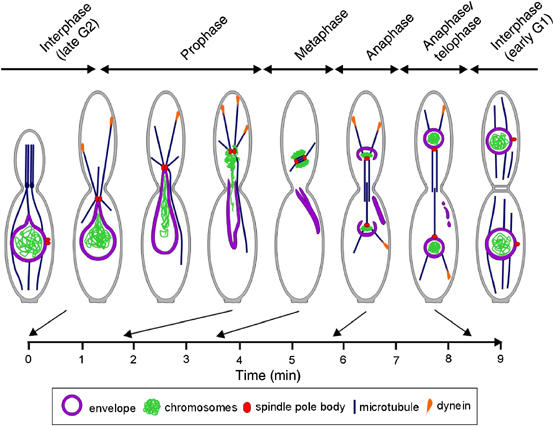Figure 8.

Model of the role of the cytoskeleton in NEBD in U. maydis. Interphase: Nuclei are located in the mother cell while a polar bud is formed (G2). The SPB is inactive and MTs are nucleated at polar MTOCs in the bud neck. At this stage, forces are exerted on the nucleus that pull membrane extensions towards the bud, without displacing the nucleus. Prophase: The SPB becomes actived, migrates to the front of the nucleus and nucleates MTs that reach into the bud. Dynein at the plus-end of these MTs appears to pull a nuclear extension into the bud. At this time, chromosomes condense and migrate through the extension into the daughter. The NE becomes permeable and finally breaks at the SPB. Chromosomes leave the old envelope and gather around the SPB, while the old envelope is left behind. Metaphase: A short spindle is formed within the daughter cell, which is surrounded by chromosomes. Anaphase: The spindle elongates and pushes chromosomes back into the mother. New envelopes appear at the distal poles of the spindle. Telophase: The NE closes up and the DNA decondenses. The old envelope is resorbed. Interphase (G1): Finally, the SPB becomes inactivated, new MT arrays appear and septa are formed. After cell separation and DNA duplication, a new bud is formed at the opposite cell pole (Wedlich-Söldner et al, 2002a). An estimated time scale for the mitotic steps is given below.
